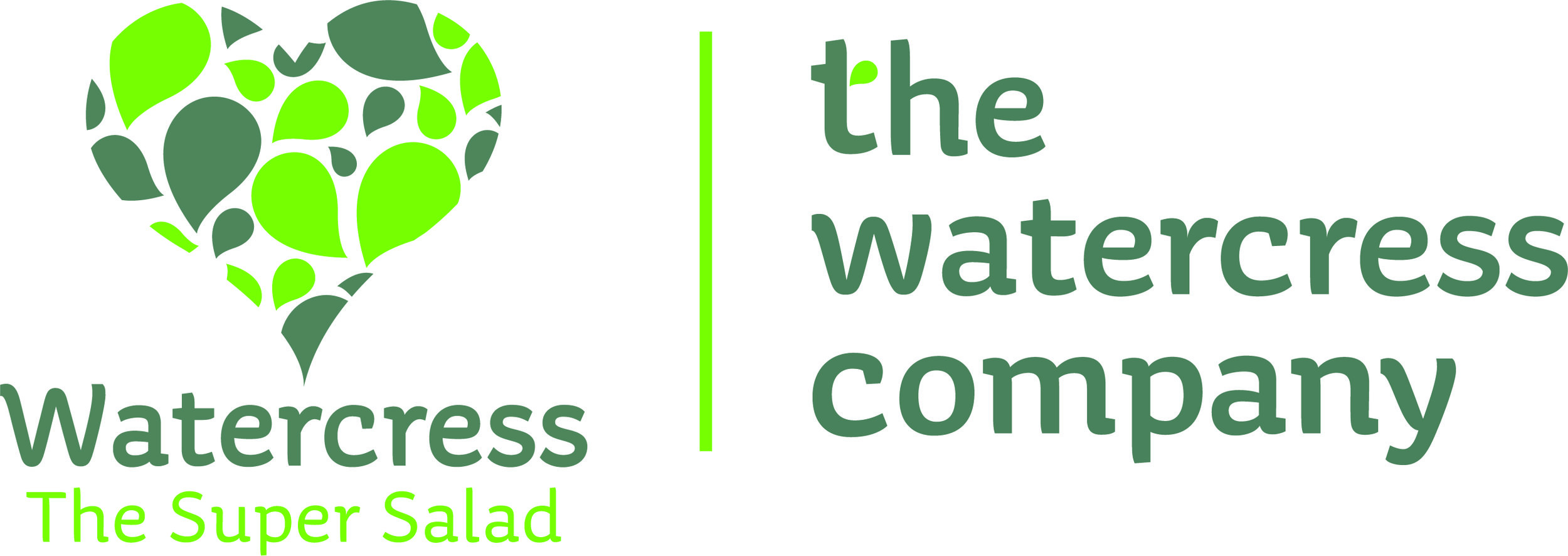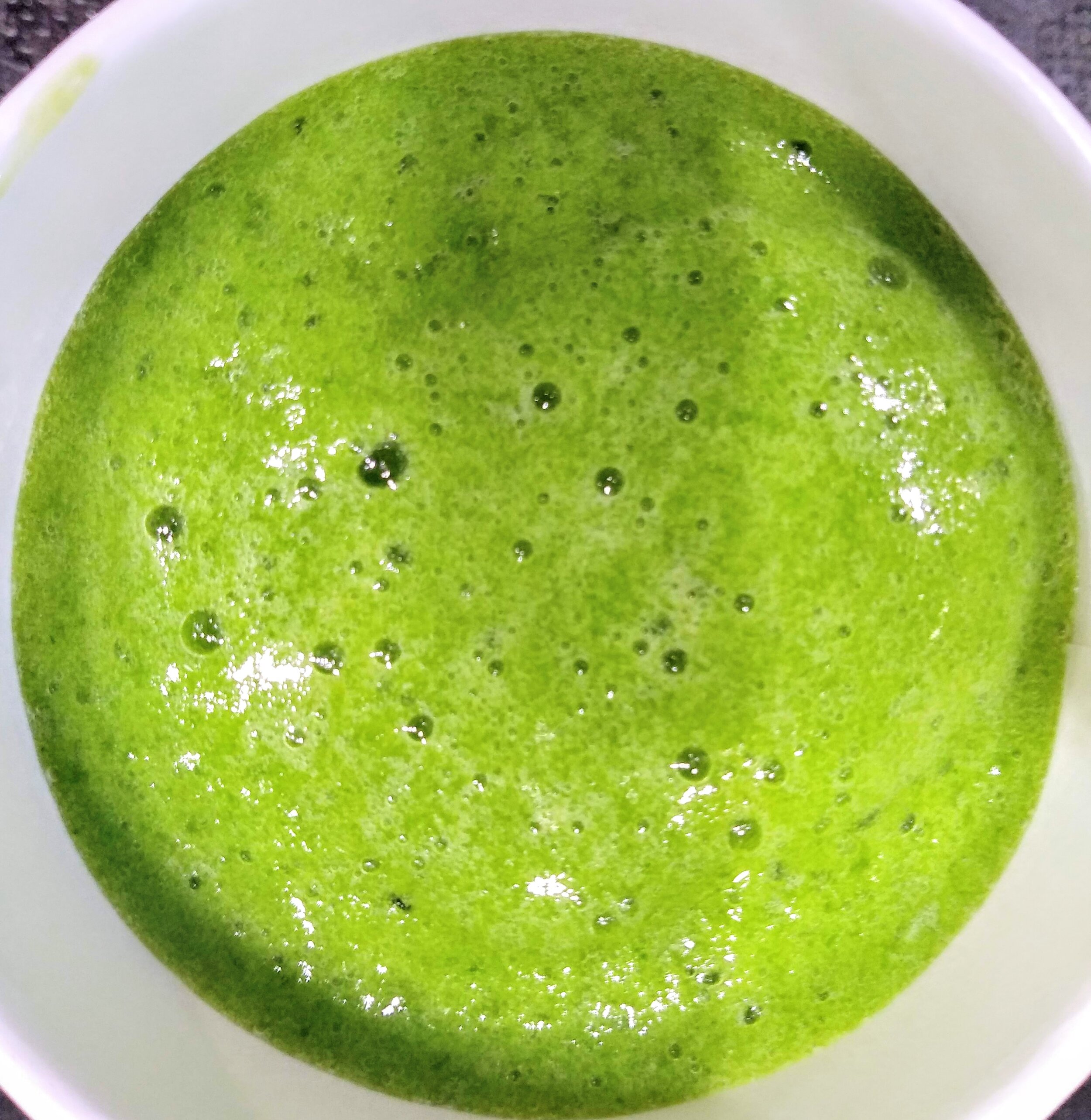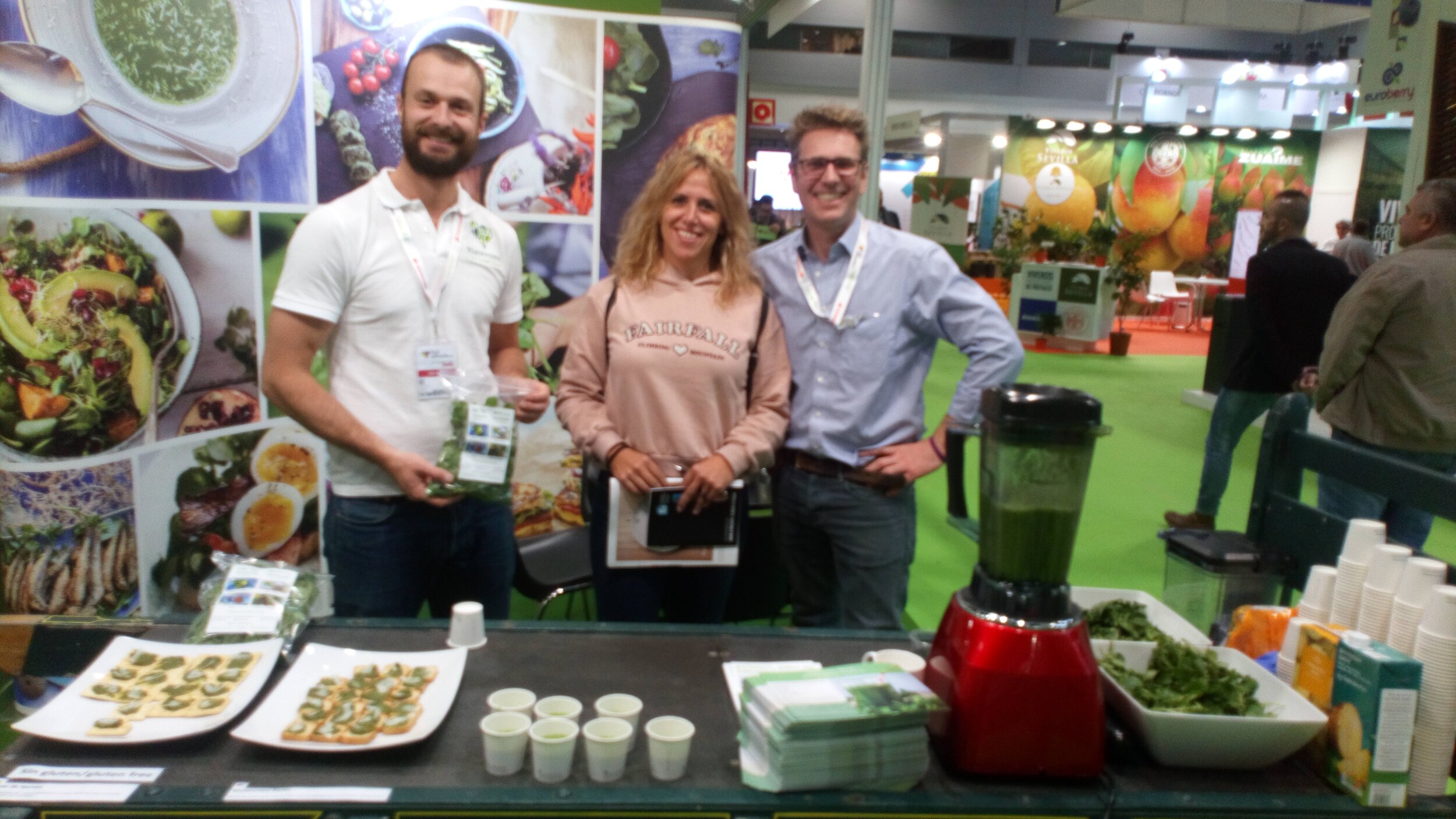Watercress sales set to soar in Spain after Fruit Attraction success
The Watercress Company, along with Royalcress, our Spanish sister company, have just returned from attending the huge trade show, Fruit Attraction, in Madrid. Here we hosted the first ever stand-alone watercress exhibition the show had seen, and we are delighted we went!
Watercress has experienced something of a renaissance in the UK over the last 20 years and, due to this explosion in popularity, The Watercress Company established farms in Spain both to ensure year-round availability in the UK and to explore other markets. Today 1.5 million kilos of watercress are grown in Spain, largely for export not just to the UK but to Switzerland, Denmark, France, Germany and the Netherlands. Portugal is another key export market for Spanish grown watercress and is, in fact the second biggest consumer of watercress, next to the UK . This is largely down to the fact that much of the research undertaken in the early 2000s by UK watercress farmers into links between PEITC, the plant compound in watercress that gives its distinctive peppery taste and the prevention of cancer was done in conjunction with Portuguese universities.
Watercress is so popular in Portugal McDonald’s have added it to their burgers!
However, despite Portugal being its neighbour, Spain as a country has yet to embrace watercress in the same way and, although we have been farming in Spain for over 30 years, not a single bag of watercress is sold in Spanish supermarkets! We knew that Fruit Attraction could be the launch pad we needed to boost awareness and make domestic sales skyrocket and from the interest we have generated so far it seems we were right!
Over the course of the three days, the six- strong watercress team was constantly busy from 8 am to closing time at 7 pm. We offered visitors the chance to try freshly harvested watercress alongside tasters of delicious watercress, mango and pineapple smoothies and morsels of bread dipped in mouth-watering watercress pesto; in total over 3000 samples were distributed during the course of the show. As a result we had 36 pages of enquiries ranging from major retailers to individual private packers interested in stocking watercress for the first time.
What was just as exciting, however, was the enthusiasm and interest visitors were expressing in watercress generally; they were keen to know more about the growing methods, its history, its sustainability and its phenomenal nutritional benefits.
Everyone loved the stand!
The team serving watercress smoothies, pesto and answering questions about everything watercress
Here are the answers to some of the most frequently asked show questions:
Why watercress and not land cress?
We have been growing watercress (Nasturtium officinale) in Jerez near Cadiz, Spain for 30 years and it’s been hugely successful; Royalcress is now Europe’s largest watercress farmer. Watercress is a completely different species to land cress (Barbarea verna) which has a much stronger flavour, is not as tender to eat and does not have the same wealth of medical research behind it that watercress does.
Watercress and land cress look very different when grown but similar once cut for salads. The easy way of telling between the two is that watercress is multi-branching and, once cut, forms a sprig, land cress leaves are single stems.
A typical sprig of watercress (Nasturtium officinale)
Distinctive single stems of land cress (Barbarea verna)
For these reasons mean that land cress is far less frequently used. Watercress would have been found throughout Europe for centuries and Spain has a climate that enables year round production in the purpose built watercress beds. This suitability to Europe has enabled a market to grow to an estimated retail value of €65 million euros per year.
Did you know? Watercress (Nasturtium officinale), the Latin name of Nasturtium, literally means “twisted nose” and this refers to the unique peppery flavour and taste we now know to be so healthy. The second part of the name, officinale is commonly used in Latin for a plant used in medicine or herbalism.
Watercress in flowing spring water
Land cress in soil, a very different plant
I’m interested in sustainability
Watercress is incredibly sustainable as it is an outdoor crop that can be grown all year round in Spain and for this reason is harvested up to 7 times a year. The purpose built watercress beds can be rotated with watercress throughout the year; they are sturdy, filled with gravel for the watercress to anchor into and flowing spring water circulates through the beds. Once cropped, the watercress beds can be cleaned out and replanted in less than 2 days allowing a seamless and constant production with very little risk of shortages of supply, making it a very reliable baby leaf. The spring water can be recirculated, so the nutrients it contains are not lost but retained within the re-circulation and the beds are naturally topped up with rainfall which can be stored in tanks.
I’ve heard watercress is nutritious?
Kike and Paula explain why watercress is so healthy
Watercress is packed with nutrients and is regarded as one of the most nutritious crops in the world. Many studies have identified that this peppery leaf has a significant nutrient density which allows watercress to boast top position in many comparisons of the nutritional content of various vegetables. This makes it extremely easy to promote and one of the reasons watercress consumers are so loyal and make repeat purchases. Watercress contains over 50 vital vitamins and minerals and is particularly rich in Iron, Vitamin C, Calcium and Vitamin K. Gram for gram it contains more Vitamin C than an orange, more calcium than milk, more folate than banana and more Vitamin E than broccoli. Watercress is also a rich source of fibre.
What else does watercress do for health?
Watercress contains an extremely well researched compound called PEITC which is responsible for a host of very interesting processes benefiting the human body. PEITC occurs naturally in watercress in high volume and is what gives it its characteristic peppery taste. The research into this compound has been shown to prohibit the progress of several cancers including colon, breast and melanoma skin cancer. When eaten the health giving ingredient in the leaves and stalk is activated through specific enzymes found in the leaf and in our bodies. This research continues to attract significant attention and is partly responsible for the success of watercress in the last 20 years throughout Europe. Portugal has had a significant role in this research along with the UK and the US.
How is watercress grown?
Watercress is not grown on land, but in flowing spring water making it totally unique in its production. It is grown in purpose built beds 15 cm deep with retaining walls and a gentle but constant gradient to allow the nutrients in the water to feed the 22 million individual plants in every bed. The beds have a firm sub-base and are filled with gravel onto which the watercress seed is sown throughout the year; after germination water is added progressively as the crop grows taller. Generally it takes 6 weeks from sowing to have a mature plant, but the weather can speed up or slow this process. Crops are harvested with purpose built harvesters taking the top 12 cm of crop leaving a stubble that is either trimmed and used to regrow a second crop or cleaned out back to gravel and replanted.
A model at the show detailing a cross section of a typical Spanish watercress bed - fresh, spring water fed of course
How do I sell watercress and what for?
Watercress is a very versatile multi-use leaf which is commonly used as a salad. Its delicate peppery flavour also works wonderfully as an ingredient in smoothies or added to hot savoury dishes such as soups, stir-fries, pestos or sauces. Watercress is most commonly sold washed in bags or punnets weighing 85 g -100 g and is also added to mixes including spinach and rocket.
Watercress can be found in the salad aisle of major UK supermarkets
What is your history?
Watercress has a long history dating back to the Ancient Greeks, but more recently the history of watercress has revolved around the commercial growth and consumption that has occurred in the UK, France & Northern Europe and, markedly in the last 30 years, specifically Portugal and Spain. These latter two southern European countries have doubled the production area to satisfy the growing demand and popularity worldwide. The industry has expanded with specific technology allowing the seasons to extend and productivity to increase.
One of the farms at Royalcress, Jerez, Established in 1986 for UK winter supply
Health by demographic
I hear watercress has to be grown in spring water?
As water is a major part of watercress production, we make significant effort to ensure we have clean and safe water sources. All of our water sources are regularly tested to meet the most stringent procedures and farms are fenced to ensure livestock are prevented from entering the production area. In this way we can be sure our water sources are free from any harmful bacteria and the watercress is safe to eat. We work to the highest standards recognised throughout the world and have successfully attained these for many years without compromising our service to many national and international retailers.
We hope that our presence Fruit Attraction will herald the start of a whole new exciting era for watercress consumption in Spain. To be part of it contact:
info@thewatercresscompany.com (UK sales)
info@royalcress.com (European sales)
info@watercressfarms.com (USA sales)
The Royalcress and Watercress Co. team in Madrid

























